Abstract
1. Cutaneomuscular reflexes have been recorded in ten adult subjects from extensor digitorum brevis (EDB), tibialis anterior (TA), soleus (Sol), quadriceps femoris (Quad) and erector spinae (ES) following electrical stimulation of the digital nerves of the second toe. 2. Recordings were made while subjects were instructed to activate voluntarily the relevant muscles and also when these muscles were active posturally. 3. Reflex responses could comprise three components: an initial increase in EMG (E1), followed by a decrease (I1), followed by a second increase (E2). E1 and I1 were confined to muscles acting at the ankle and in the foot. E2 was most pronounced in EDB but also found in TA, Sol, Quad (1 subject) and ES. No responses were recorded contralateral to the stimulus. 4. E2 was significantly larger when the reflex was recorded during voluntary contraction of the muscle, rather than when the muscle was active posturally. 5. E1 and I1 components are mediated via spinal pathways. E2 requires the integrity of the dorsal columns, sensorimotor cortex and corticospinal tract (Jenner & Stephens, 1982; Rowlandson & Stephens, 1985b). The present study suggests that one or more of these supraspinal pathways is more active during voluntary contraction of lower limb muscles than when these muscles are active posturally.
Full text
PDF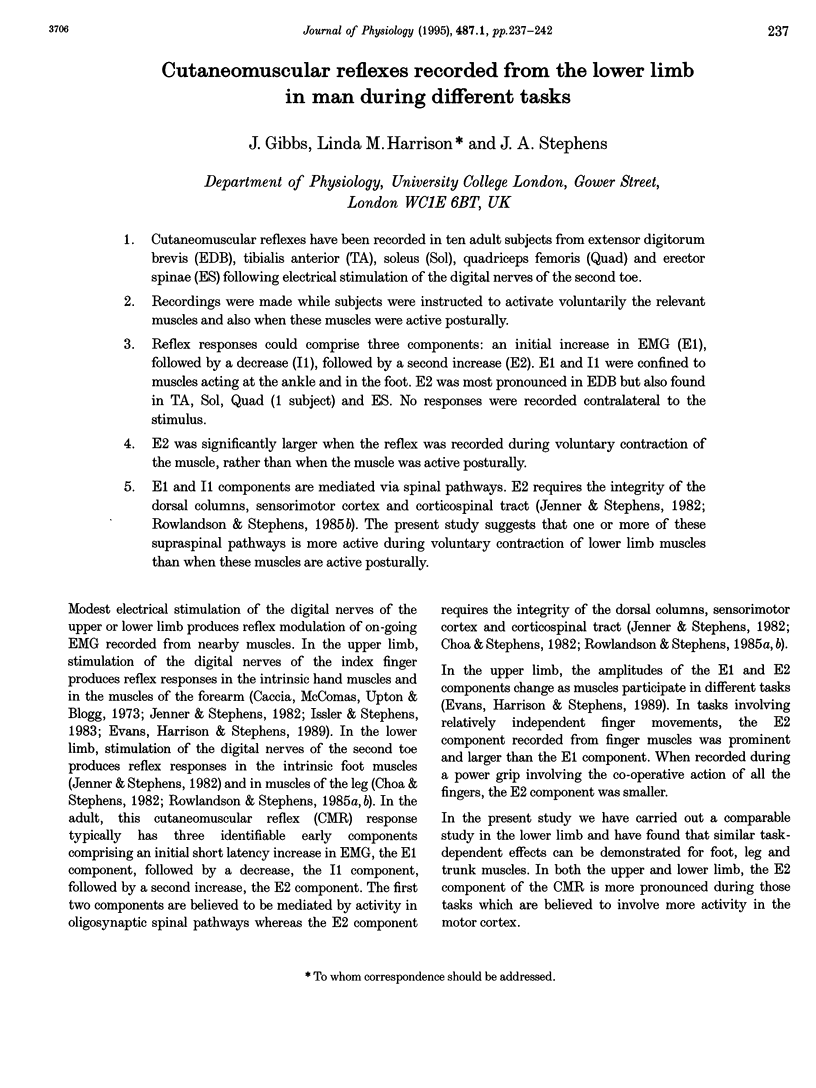
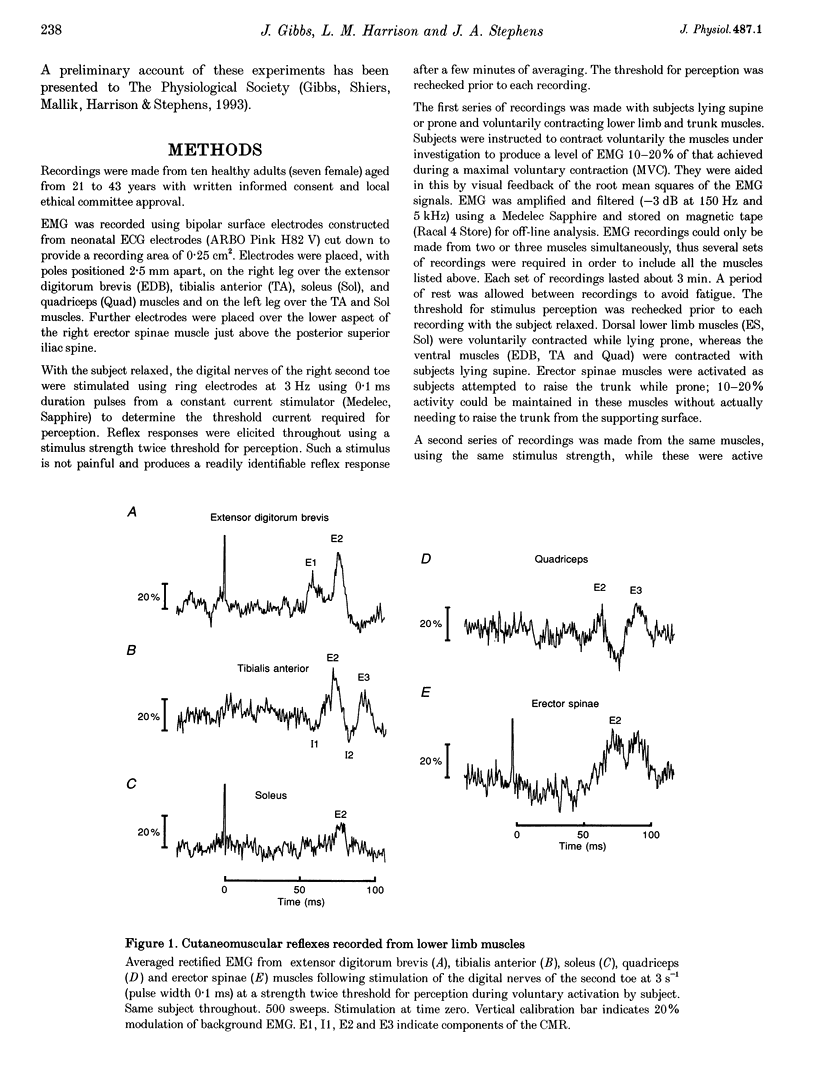
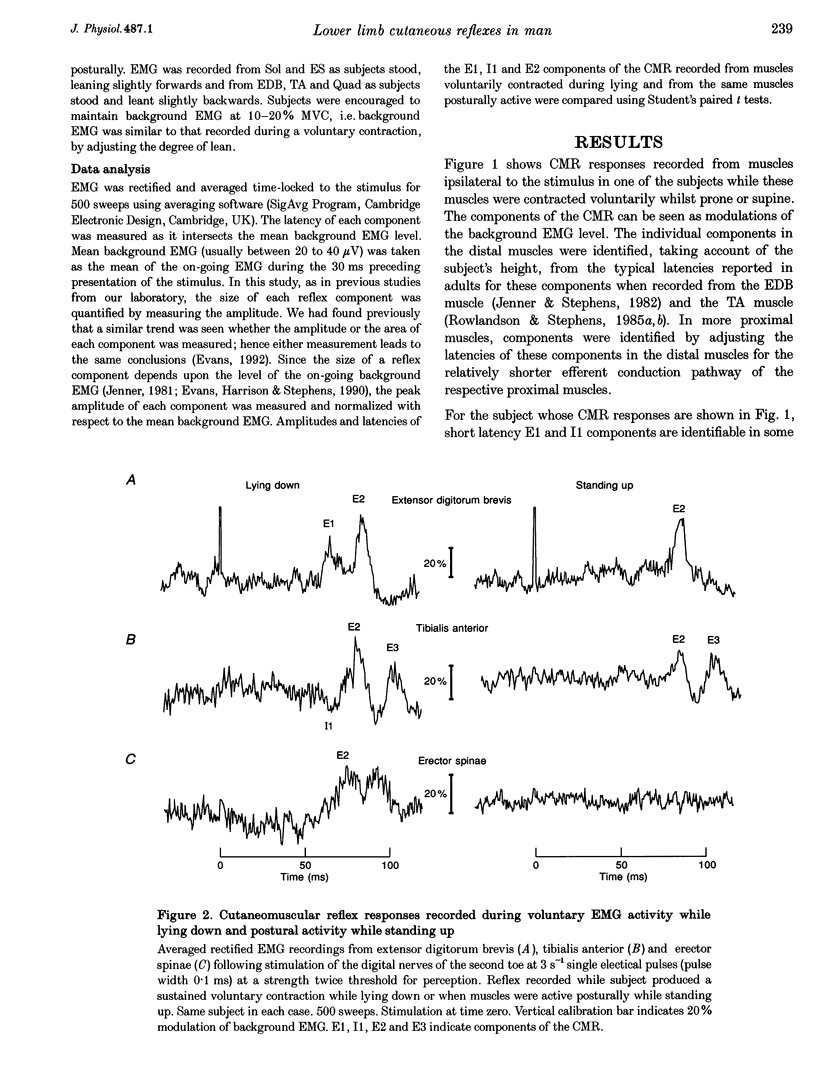
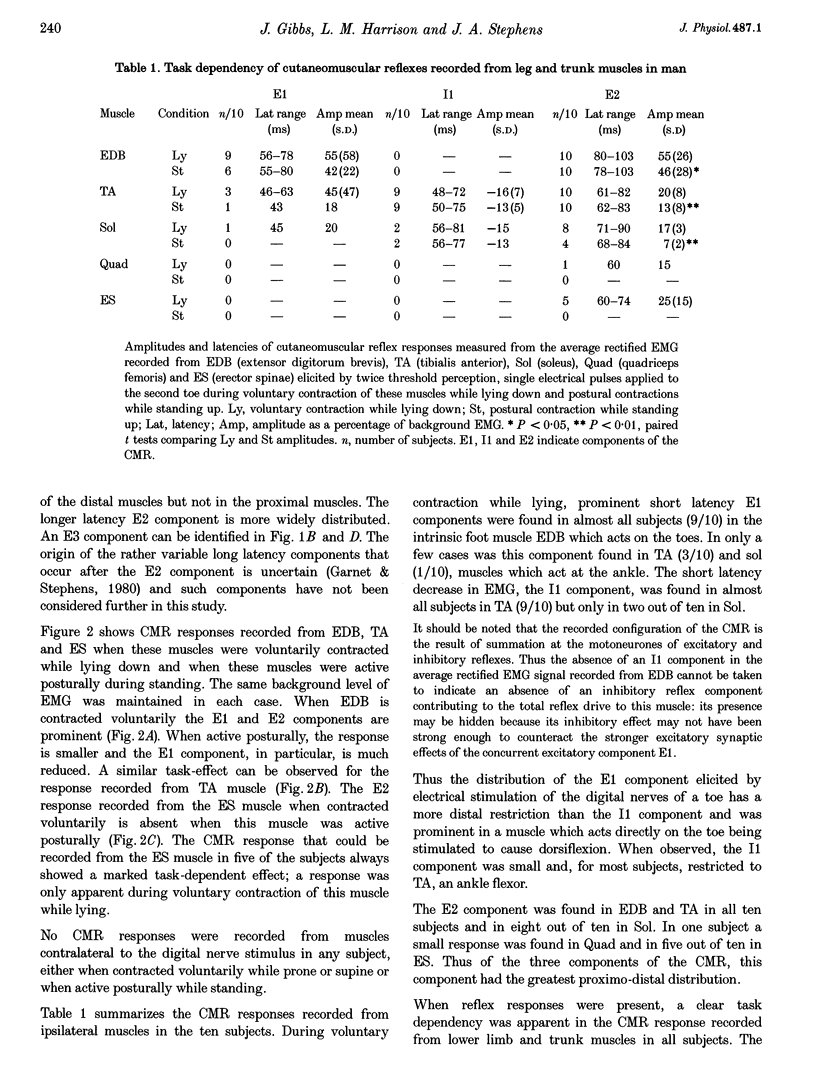

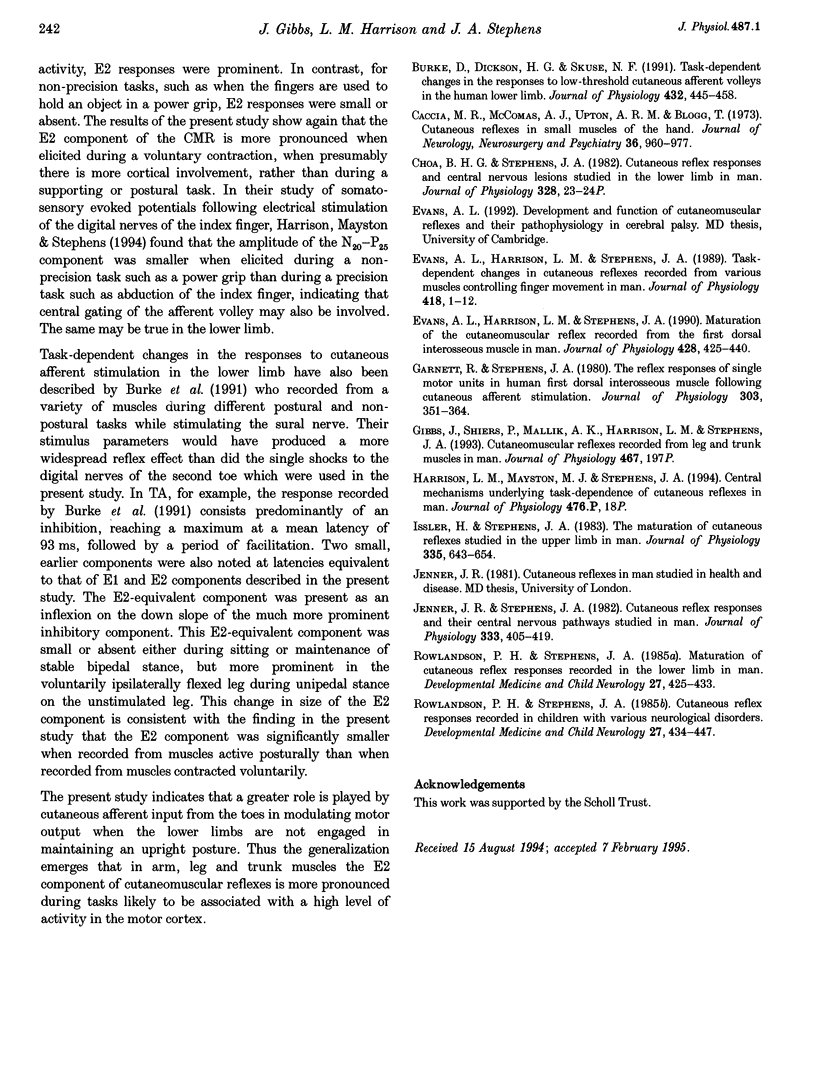
Selected References
These references are in PubMed. This may not be the complete list of references from this article.
- Burke D., Dickson H. G., Skuse N. F. Task-dependent changes in the responses to low-threshold cutaneous afferent volleys in the human lower limb. J Physiol. 1991 Jan;432:445–458. doi: 10.1113/jphysiol.1991.sp018393. [DOI] [PMC free article] [PubMed] [Google Scholar]
- Caccia M. R., McComas A. J., Upton A. R., Blogg T. Cutaneous reflexes in small muscles of the hand. J Neurol Neurosurg Psychiatry. 1973 Dec;36(6):960–977. doi: 10.1136/jnnp.36.6.960. [DOI] [PMC free article] [PubMed] [Google Scholar]
- Evans A. L., Harrison L. M., Stephens J. A. Maturation of the cutaneomuscular reflex recorded from the first dorsal interosseous muscle in man. J Physiol. 1990 Sep;428:425–440. doi: 10.1113/jphysiol.1990.sp018220. [DOI] [PMC free article] [PubMed] [Google Scholar]
- Evans A. L., Harrison L. M., Stephens J. A. Task-dependent changes in cutaneous reflexes recorded from various muscles controlling finger movement in man. J Physiol. 1989 Nov;418:1–12. doi: 10.1113/jphysiol.1989.sp017825. [DOI] [PMC free article] [PubMed] [Google Scholar]
- Garnett R., Stephens J. A. The reflex responses of single motor units in human first dorsal interosseous muscle following cutaneous afferent stimulation. J Physiol. 1980 Jun;303:351–364. doi: 10.1113/jphysiol.1980.sp013290. [DOI] [PMC free article] [PubMed] [Google Scholar]
- Issler H., Stephens J. A. The maturation of cutaneous reflexes studied in the upper limb in man. J Physiol. 1983 Feb;335:643–654. doi: 10.1113/jphysiol.1983.sp014556. [DOI] [PMC free article] [PubMed] [Google Scholar]
- Jenner J. R., Stephens J. A. Cutaneous reflex responses and their central nervous pathways studied in man. J Physiol. 1982 Dec;333:405–419. doi: 10.1113/jphysiol.1982.sp014461. [DOI] [PMC free article] [PubMed] [Google Scholar]
- Rowlandson P. H., Stephens J. A. Cutaneous reflex responses recorded in children with various neurological disorders. Dev Med Child Neurol. 1985 Aug;27(4):434–447. doi: 10.1111/j.1469-8749.1985.tb04566.x. [DOI] [PubMed] [Google Scholar]
- Rowlandson P. H., Stephens J. A. Maturation of cutaneous reflex responses recorded in the lower limb in man. Dev Med Child Neurol. 1985 Aug;27(4):425–433. doi: 10.1111/j.1469-8749.1985.tb04565.x. [DOI] [PubMed] [Google Scholar]


